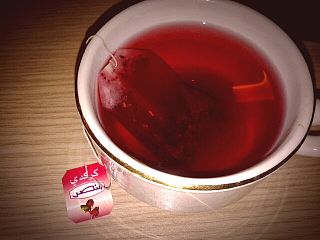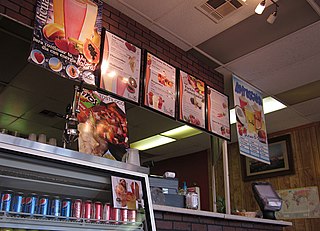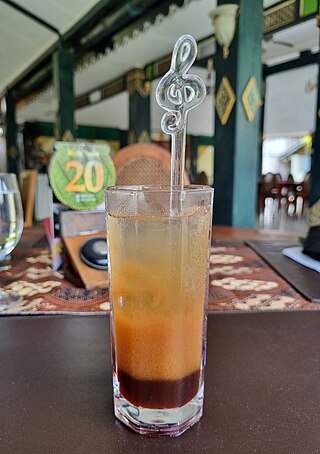
Mexican cuisine consists of the cooking cuisines and traditions of the modern country of Mexico. Its earliest roots lie in Mesoamerican cuisine. Its ingredients and methods begin with the first agricultural communities such as the Olmec and Maya who domesticated maize, created the standard process of nixtamalization, and established their foodways. Successive waves of other Mesoamerican groups brought with them their cooking methods. These included: the Teotihuacanos, Toltec, Huastec, Zapotec, Mixtec, Otomi, Purépecha, Totonac, Mazatec, Mazahua, and Nahua. With the Mexica formation of the multi-ethnic Triple Alliance, culinary foodways became infused.

Costa Rican cuisine is known for being mostly mild, with high reliance on fruits and vegetables. Rice and black beans are a staple of most traditional Costa Rican meals, often served three times a day. Costa Rican fare is nutritionally well rounded, and nearly always cooked from scratch from fresh ingredients. Owing to the location of the country, tropical fruits and vegetables are readily available and included in the local cuisine.

Horchata, or orxata, is a name given to various beverages, which are generally plant based, but sometimes contain animal milk. In Spain, it is made with soaked, ground, and sweetened tiger nuts. In Latin America and other parts of the Americas, the base is jicaro, melon or sesame seeds, or white rice, along with other spices. Different varieties can be served hot or cold, and may be used as a flavor in other beverages, such as frappé coffee.

Aguas frescas are light non-alcoholic beverages made from one or more fruits, cereals, flowers, or seeds blended with sugar and water. They are popular in Mexico and some other Latin American countries, as well as parts of the United States such as the Southwest. Some of the more common varieties include tamarindo, jamaica, and horchata.

Salvadoran cuisine is a style of cooking derived from the nation of El Salvador. The indigenous foods consist of a mix of Amerindian cuisine from groups such as the Lenca, Pipil, Maya Poqomam, Maya Chʼortiʼ, Alaguilac and Cacaopera peoples. Many of the dishes are made with maize (corn). There is also heavy use of pork and seafood. European ingredients were incorporated after the Spanish conquest.

Grupo Jumex, S.A. de C.V., which means Jugos de México, is a brand of juice and nectar from Mexico. The Jumex brand is also popular among Hispanic consumers in the United States. Currently, the Jumex Group offers lines of fresh and preserved fruit juices, nectar, children's drinks, milk, smoothies, energy drinks, and sports drinks in Mexico.

Tamarindo, also commonly known as agua de tamarindo, is a non-alcoholic beverage made of tamarind, sugar, and water. The tamarind plant originated in India but has since been widely distributed on a global scale and is commonly found in tropical regions. The tamarind plant produces fruit pods containing pulp and seeds. Tamarind is a versatile ingredient that is used for a variety of commercial, culinary and medicinal purposes with the pulp being the most commonly used part of the tamarind plant, used in a range of beverages including tamarindo and other similar beverages such as Nam Ma Kham Wan in Thailand and Poha Beer in Ghana. Tamarind pulp offers a flavour that ranges from sour to sweet, making tamarindo a sour-sweet beverage recognised as a popular flavour of aguas frescas, which is traditionally consumed in Latin America. Comprising only three ingredients, tamarindo involves a simple production process making it an easy beverage to prepare at home. Tamarindo has been produced commercially as a soda flavour, by companies such as Jarritos and Nestle, and distributed globally.

Colombian cuisine is a compound of the culinary traditions of the six main regions within Colombia. Colombian cuisine varies regionally and is particularly influenced by Indigenous Colombian, Spanish, and African cuisines, with slight Arab influence in some regions. As one of the most biodiverse countries in the world, Colombia has one of the widest variety of available ingredients depending on the region.

Hibiscus tea is a herbal tea made as an infusion from crimson or deep magenta-colored calyces (sepals) of the roselle flower. It is consumed both hot and cold. It has a tart, cranberry-like flavor.

Honduran cuisine is a fusion of Mesoamerican, Spanish, Caribbean and African cuisines. There are also dishes from the Garifuna people. Coconut and coconut milk are featured in both sweet and savory dishes. Regional specialties include sopa de caracol, fried fish, tamales, carne asada and baleadas. Other popular dishes include meat roasted with chismol and carne asada, chicken with rice and corn, and fried fish with pickled onions and jalapeños. In the coastal areas and the Bay Islands, seafood and some meats are prepared in many ways, including with coconut milk. Among the soups the Hondurans enjoy are bean soup, mondongo soup, seafood soups and beef soups. Generally all of these soups are mixed with plantains, yuca, and cabbage, and served with corn tortillas.

Dominican cuisine is made up of Spanish, indigenous Taíno, Middle Eastern and African influences. The most recent influences in Dominican cuisine are from the British West Indies and China.

A smoothie is a beverage made by puréeing ingredients in a blender. A smoothie commonly has a liquid base, such as fruit juice or milk, yogurt or ice cream. Other ingredients may be added, including fruits, vegetables, non-dairy milk, crushed ice, whey powder or nutritional supplements.
Panamanian cuisine is a mix of Spanish, Indigenous, and African techniques, dishes, and ingredients, reflecting its diverse population. Since Panama is a land bridge between two continents, it has a large variety of tropical fruits, vegetables and herbs that are used in native cooking.

Mexican street food, called antojitos, is prepared by street vendors and at small traditional markets in Mexico. Street foods include tacos, tamales, gorditas, quesadillas, empalmes, tostadas, chalupa, elote, tlayudas, cemita, pambazo, empanada, nachos, chilaquiles, fajita and tortas, as well as fresh fruit, vegetables, beverages and soups such as menudo, pozole and pancita. Most are available in the morning and the evening, as mid-afternoon is the time for the main formal meal of the day. Mexico has one of the most extensive street food cultures in Latin America, and Forbes named Mexico City as one of the foremost cities in the world in which to eat on the street.
Dominica cuisine is the cuisine of the island nation of Dominica. The cuisine is rooted in creole techniques with local produce flavored by spices found on the island. Dominican cuisine is a mixture of indigenous Kalinago, African, French, and English influences.

Juice is a drink made from the extraction or pressing of the natural liquid contained in fruit and vegetables. It can also refer to liquids that are flavored with concentrate or other biological food sources, such as meat or seafood, such as clam juice. Juice is commonly consumed as a beverage or used as an ingredient or flavoring in foods or other beverages, such as smoothies. Juice emerged as a popular beverage choice after the development of pasteurization methods enabled its preservation without using fermentation. The largest fruit juice consumers are New Zealand and Colombia. Fruit juice consumption on average increases with a country's income level.

A Frutería or Mexican juice bar is a juice bar that primarily serves Mexican desserts, beverages, antojitos and other popular Mexican snack foods. Mexican juice bars are popular establishments in many parts of Mexico and more recently in Mexican American communities in South-Western United States.

Samalamig, also known as palamig, is a collective term for various Filipino sweet chilled beverages that usually include jelly-like ingredients. They come in various flavors, and are commonly sold by street vendors as refreshments. Typical ingredients of the drinks include gulaman (agar), sago pearls, kaong, tapioca pearls, nata de coco, and coconut. They are usually anglicized as pearl coolers or pearl and jelly coolers.

Tamarind juice is a liquid extract of the tamarind tree fruit, produced by squeezing, mixing and sometimes boiling tamarind fruit pulp. Tamarind juice can be consumed as beverage appreciated for its fresh sour taste, or used for culinary purpose as a sour flavouring agent. The recent development uses tamarind juice as a mixture in cocktail.

















